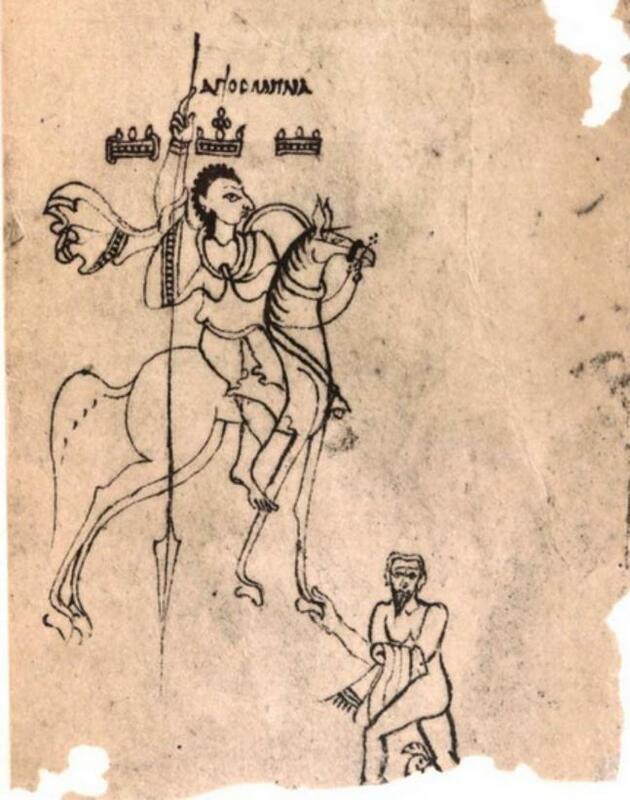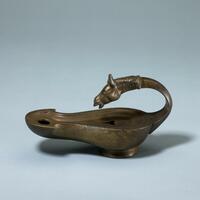Horses in Nubian art
Date:
First or second century (lamp), sixth or seventh century (terra-cotta horse figurine fragments), ca. 1000 (Faras wall painting), 950–1050 (manuscript)
Medium:
Bronze,
Terra-cotta,
Parchment
Description:
During the Middle Ages, Nubia's main exports were dates and slaves, although ivory and gold were also exchanged for Egyptian ceramics, textiles, and glass. Medieval Nubians were also well known for horse breeding, with horses from Nubia considered superior war animals. The respect for horses in the Nile Valley as far back as 1050-728 BCE is clear from a horse with a burial shroud discovered in a tomb in northern Sudan. Horse-related finds from excavations at the Nubian city of Qasr Ibrim include a bronze horse lamp from the first or second century and terra-cotta horse figurine fragments from the sixth or seventh century. At Faras Cathedral, a Nativity scene painted around the year 1000 includes the earliest representation of the Magi arriving on horseback rather than on foot. A manuscript from Edfu (Egypt) dated 950–1050 and in the Old Nubian language (written in Greek characters) features an illustration of St. Menas to accompany a description of one of his miracles. The saint rides a horse whose trappings include a bell (compare to the horses bedecked with bells at Faras).
Relevant Textbook Chapter(s):
1,
3,
4,
6
Repository and Online Resources:
• Read more about the ancient horse burial at Tombos, along the Nile River Valley.
Image Credits:
Wikimedia Commons; © The Trustees of the British Museum





